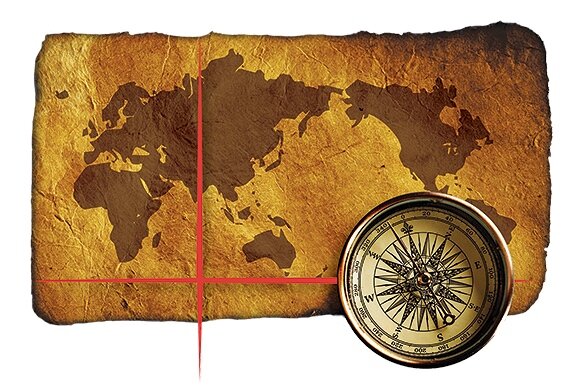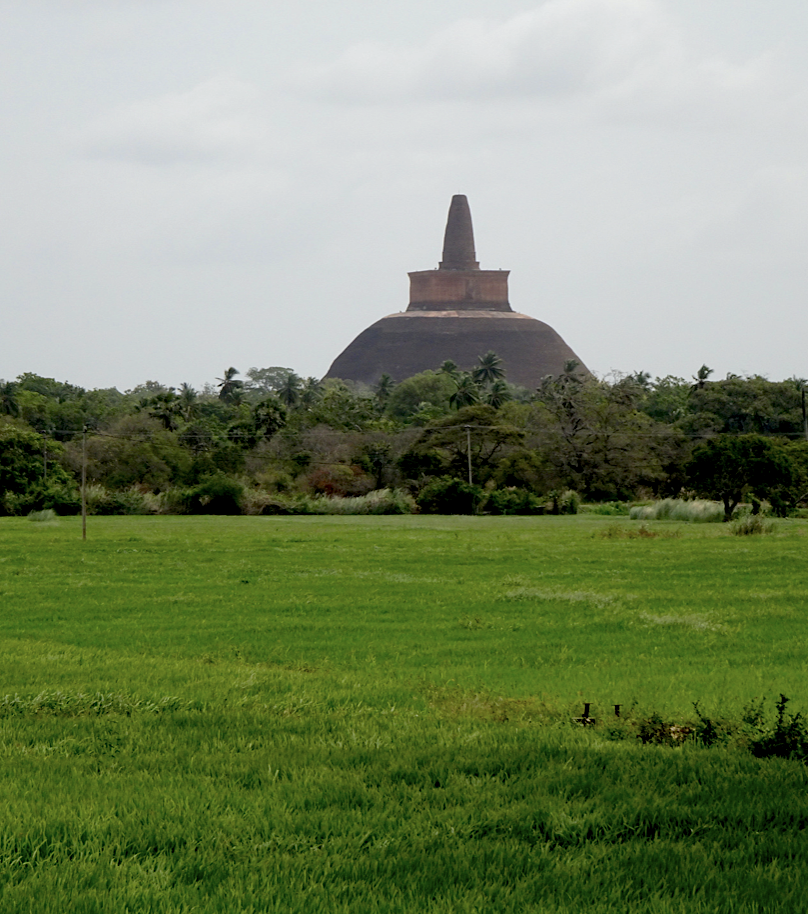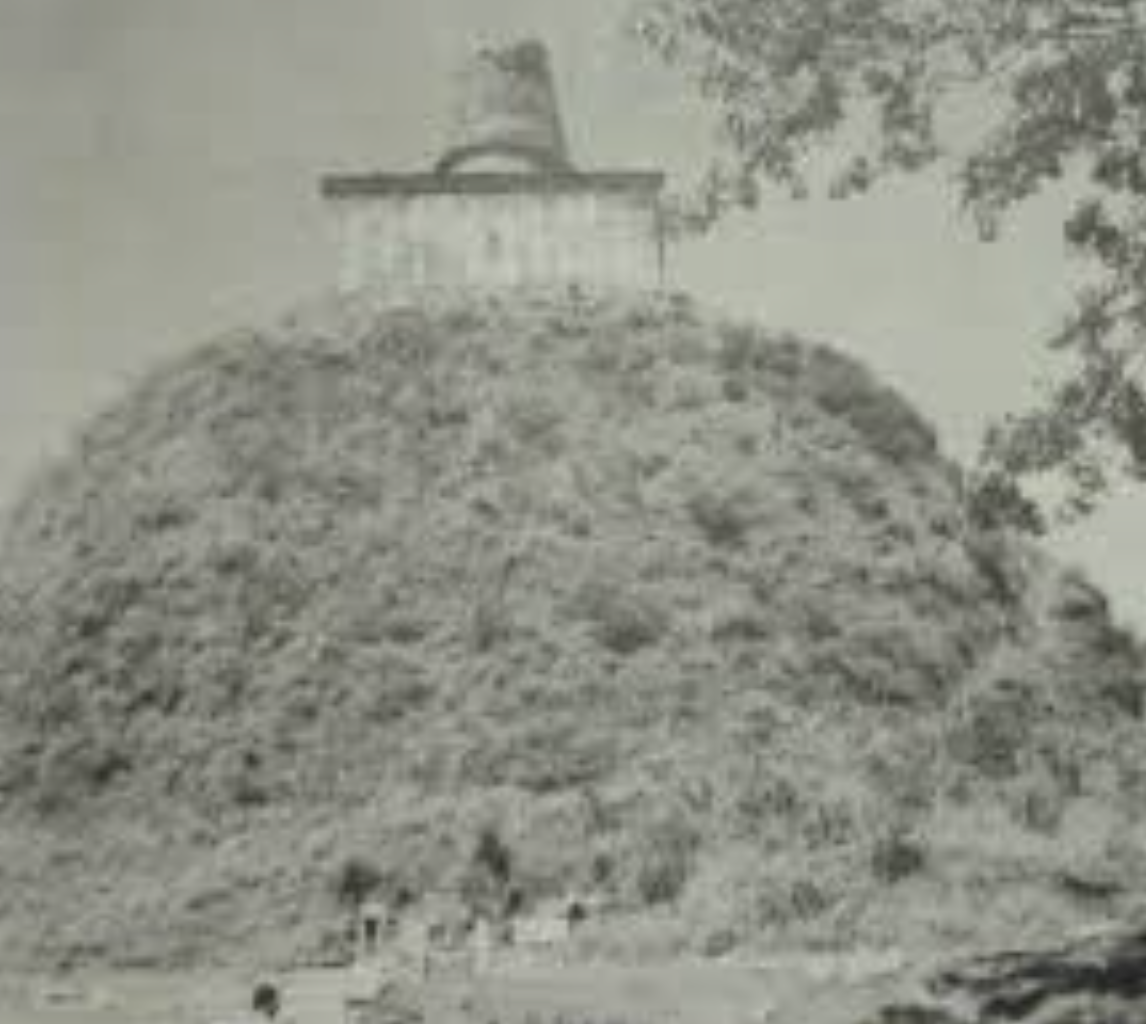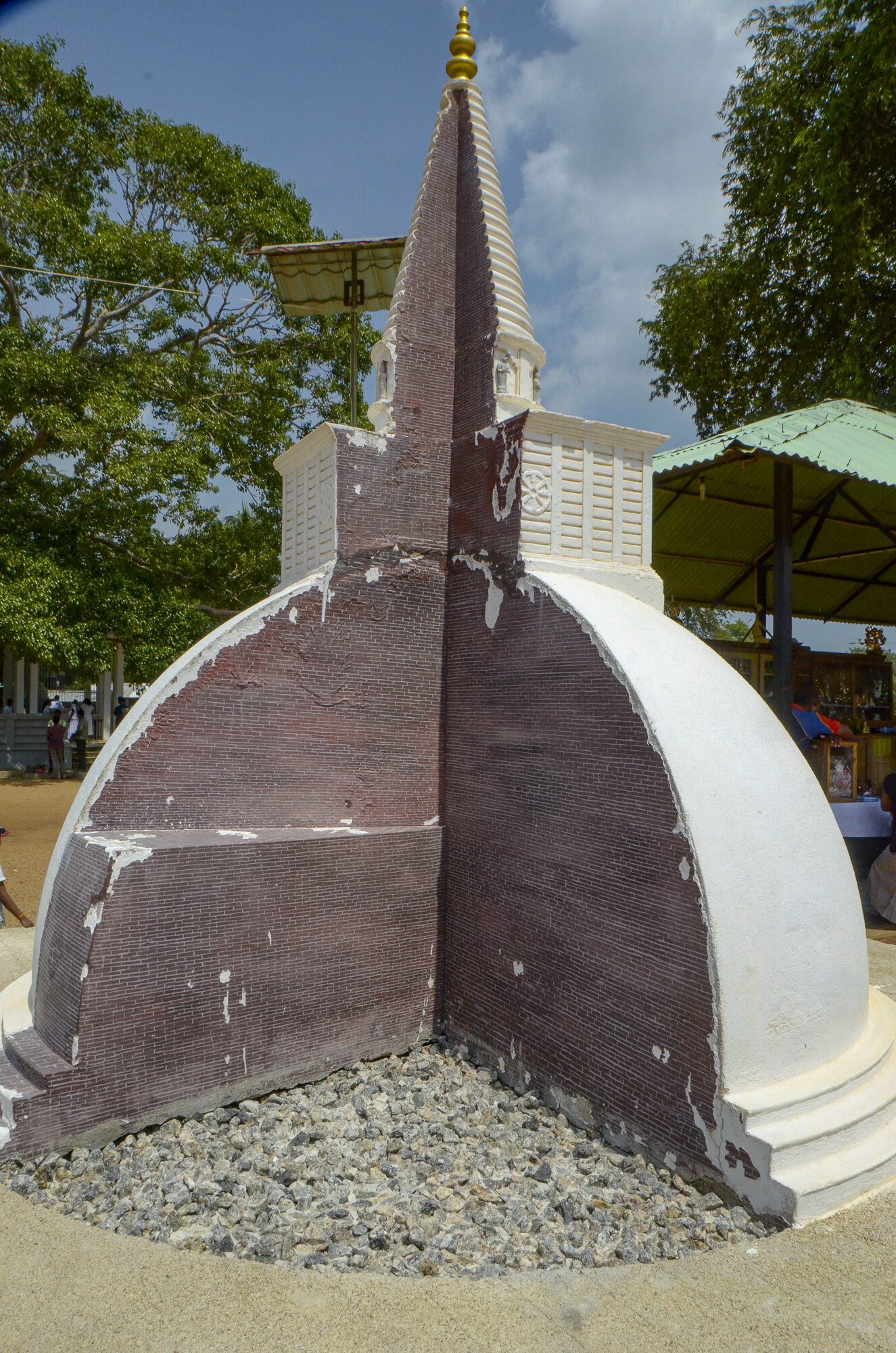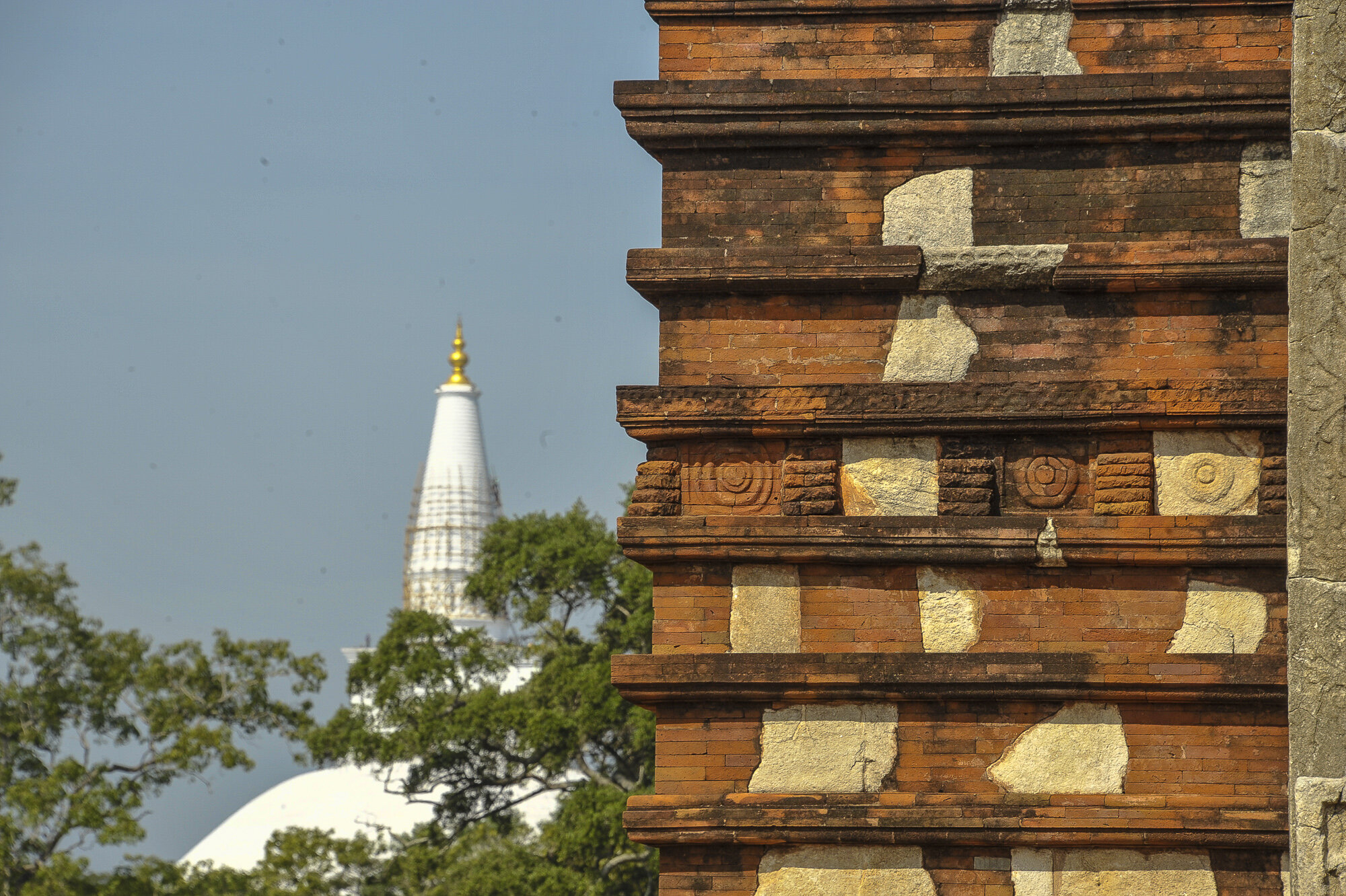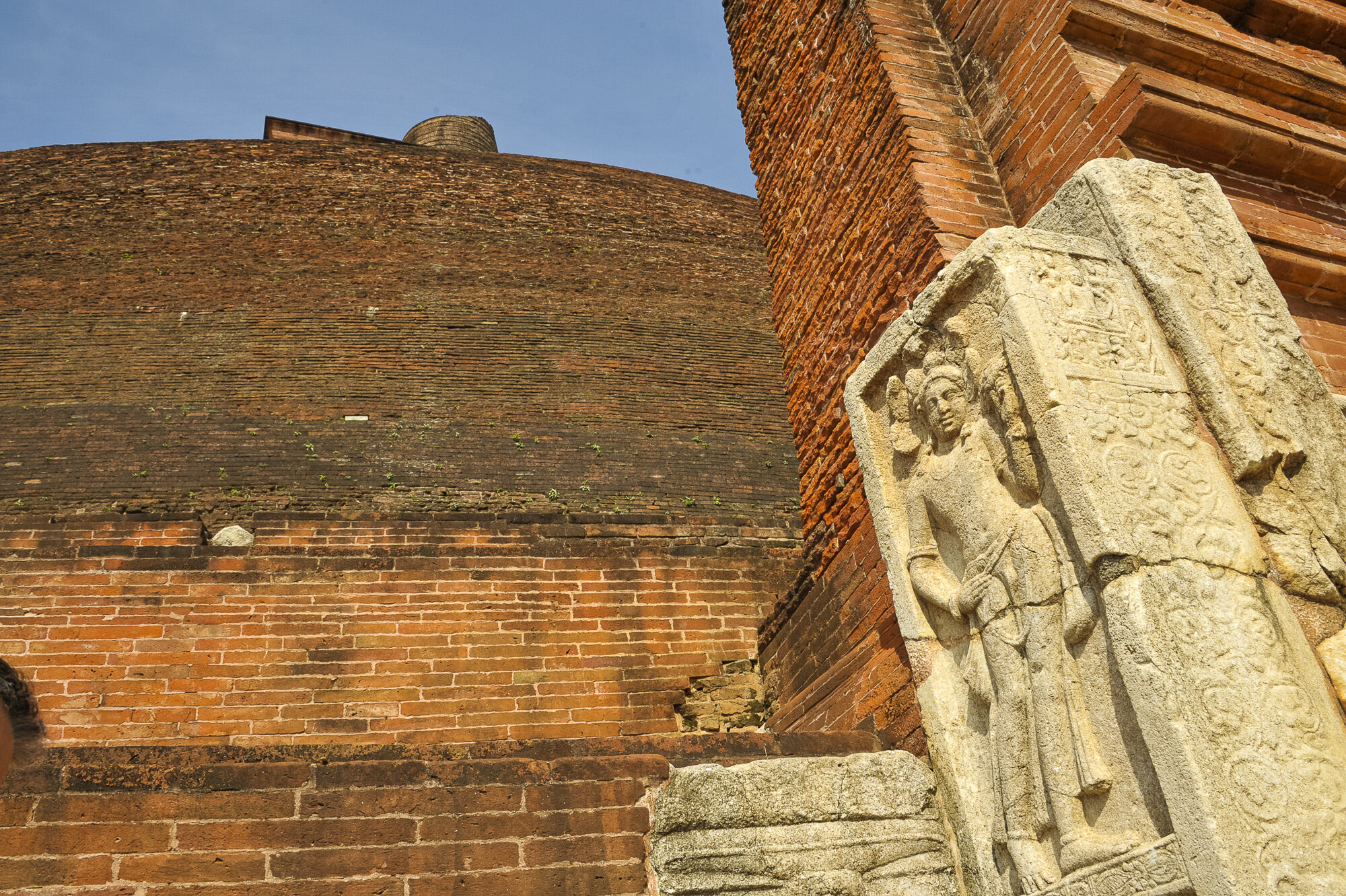A LOT OF BRICKS
What you see above is a stupa called the Jetavanaramaya , a Buddhist monument, located in the ruins of the Jetavanaramaya monastery in Unesco’s World Heritage Site of Anuradhapura in Sri Lanka.
At 122 metres (400 ft) it was the world's tallest stupa and the third tallest structure in the world when it was built by King Mahasena of Anuradhapura (273–301 AD). The structure is no longer the tallest, now down to a mere 71 metres, but it is still the largest stupa in the world, with a base-area of 233,000 m2 (2,508,000 sq ft). Approximately 93.3 million baked bricks were used in its construction; the engineering ingenuity behind the construction of the structure is a significant development in the history of the island.
As the largest ancient stupa was being built, the structural ingenuity and engineering skills employed for the construction were significant. The foundations of the structure were 8.5m deep and the size of the structure required bricks which could withstand loads of up to 166 kg. The solid foundation lay on bed-rock and the dome was constructed of full and half bricks plus earth fill. The unique shape of a perfect ellipsoid allowed for stress and written accounts describe that cracks and fissures at the basewere filled with stones and stamped down by elephants whose feet were protected with leather bindings. Finely crushed dolomite, limestone, sieved sand and clay provided the bonding material for the bricks. The clay employed was pliable and thus accommodated movement within the structure and we can still see stone inscriptions in the courtyard detailing the names of people who donated to the building effort. Records also mention the use of copper sheets over the foundation and arsenic dissolved in sesame oil to prevent insect and plant intrusions inside the stupa. It is estimated that Jetavanaramaya took 15 years to complete and would have required a skillful workforce of thousands, including brickyard workers, bricklayers and stonemasons.
Until 1909 the colossal structure was covered with shrub jungle (see rare photo of original structure). Conservation work slowly began and was funded by the income from ticket sales, mainly to foreign tourists to the three cultural triangle sites of Anuradhapura, Polonnaruwa and Sigiriya. Restorative work used bricks using the same kind of mixture that was used by the builders of the original dagoba.
93.3 million bricks…..
LITTLE KNOWN FACT:
Guiness states that the Jetavanaramaya was in fact the third the tallest buildings in the world at the time, beaten only by the two Egyptian pyramids.
BEST MONTH TO VISIT:
From December to April when the heat and humidity are at their lowest.
Longitude 80 will offer an amazing Sri Lanka expedition as soon as borders re-open and travel is deemed safe health wise. And yes, we will go and count bricks in Anuradhapura. Contact us if you want to start planning your Sri Lanka itinerary!
